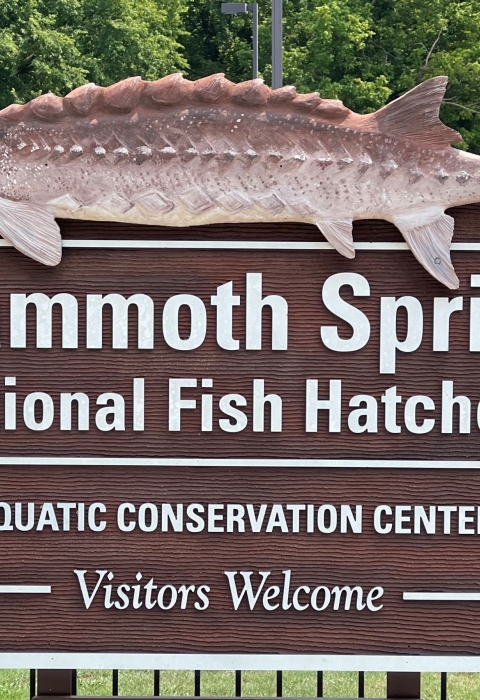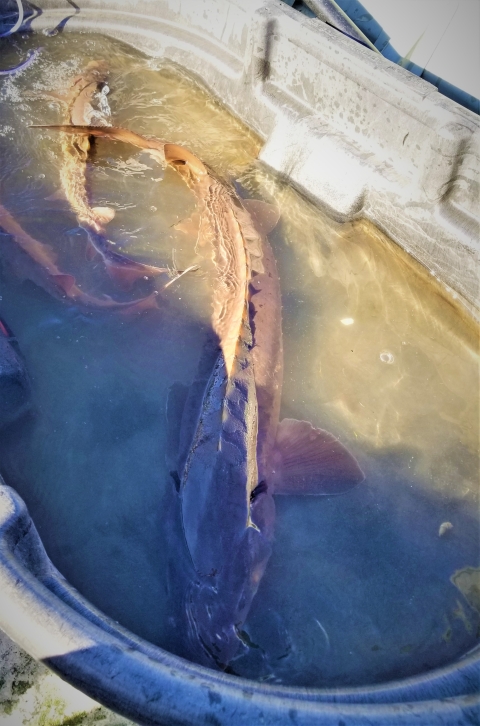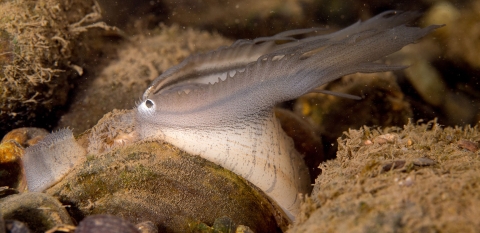What We Do
Mammoth Spring NFH produces striped bass, lake sturgeon, walleye, largemouth bass, rainbow trout, golden shiner and threadfin shad. The station is currently developing a propagation program for federally listed mussels. Federally listed mussels to be reared on station include rabbitsfoot and snuffbox. Currently, surrogate mussel species are being reared in captivity to test the system before bringing on listed mussels. Fish are stocked annually in reservoirs, lakes, rivers and coastal streams across the Legacy Region 4, which includes: Alabama, Arkansas, Florida, Georgia, Kentucky, Louisiana, Mississippi, North Carolina, South Carolina, Tennessee, Puerto Rico, and the U.S. Virgin Islands.
Management and Conservation
The next time you go fishing, you might just catch a fish that was raised at Mammoth Spring National Fish Hatchery. Since 1871, National Fish Hatcheries have been responding to conservation challenges affecting America’s fish and other aquatic species. Producing fish continues to be an irreplaceable tool in managing or restoring fisheries along with habitat conservation. In doing so, we help provide recreation opportunities to America’s 34 million anglers who spend $36 billion annually in pursuit of their favored pastime.
Mammoth Spring National Fish Hatchery aids in restoration of interjurisdictional fishes, which are species that transcend local, state, and sometimes national boundaries. Because of these interjurisdictional ranges, management concerns have been raised for their wellbeing and is a major activity for the U.S. Fish and Wildlife Service. Conservation measures are necessary in order to maintain healthy populations of these fish in our public waters. Mammoth Spring National Fish Hatchery is also developing spawning and rearing techniques for a variety of endangered and imperiled species and continues to adapt its management to meet the needs of the species nationwide.
Our Services
As a National Fish Hatchery our main service is providing fish for conservation and recreational purposes. This service has a net economic output for every tax dollar spent $12 dollars is created for the economy. Since there is such a vast selection of water types available here this hatchery can shift the species it raises as the demands and needs of species change. Along with fish production this hatchery also investigates spawning and rearing techniques for endangered and threatened species to ensure these animals are available for current and future generations.
Our Projects and Research
National Fish Hatcheries raise fish and other aquatic species – like crayfish and mussels - to help restore and sustain important fish and other aquatic species for the benefit of the American people. Freshwater mussels play very important roles in our rivers and lakes filtering the water and creating habitat for fish and aquatic insects fish like to eat. With declining fish populations and declining freshwater mussel populations becoming prevalent across the world, fish hatchery operations are more important than ever.
This hatchery is developing spawning and rearing techniques for a variety of endangered, threatened, or imperiled species and continues to adapt as the needs evolve. Past projects include the rearing of Ozark hellbender salamander, and alligator snapping turtle. Current projects include, in cooperation with Arkansas State University, assisting in nationwide efforts to protect and restore listed and non-listed mussel populations. We accomplish this by developing culture techniques, investigating life histories, and providing a refuge for imperiled populations. The goal for mussel restoration efforts are to conduct research and ultimately stock mussels back into the wild to restore the species.




